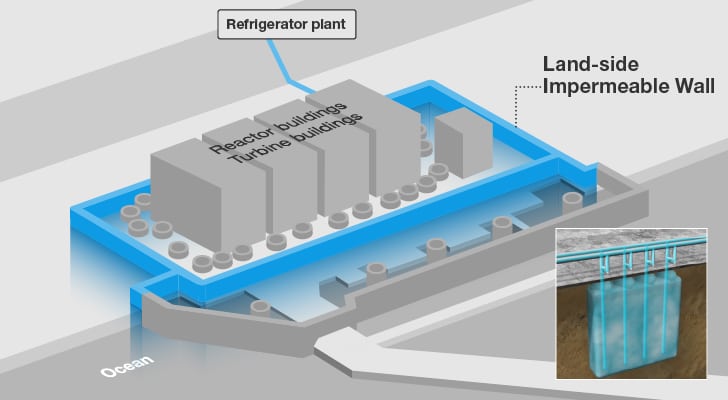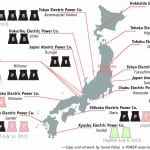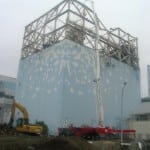An “ice wall” put up by Tokyo Electric Power Co. (TEPCO) around its four crippled reactor units at Fukushima Daiichi reportedly isn’t working as planned to keep out groundwater flowing into the devastated nuclear plant.
According to The Asahi Shimbun, an expert panel at Japan’s Nuclear Regulation Authority on August 18 said that though five months had elapsed since TEPCO’s $344 million ice wall had been completed, it had “shown little or no success.” The panel reportedly called on the utility to forge a new plan to control groundwater inflow.
The Japan Times last month said, attributing TEPCO, that the amount of groundwater pumped up from “subdrain” wells around the reactor buildings averaged 321 tons per day in June—only 31 tons less than May’s daily average. The newspaper also quoted a TEPCO official as saying that it was not technically feasible to keep all groundwater from seeping through the ice wall.
“We are aiming to control the amount of water going into the reactor buildings, with the ice wall and subdrains,” Tomohiko Isogai, a TEPCO official, reportedly told The Japan Times.
A Cold Solution
The 1,500-meter (m)-long “ice wall” encircling Units 1 to 4—which TEPCO calls “land-side impermeable walls”—is actually a barrier of soil that is frozen by a refrigerant flowing from a freezing plant through pipes buried 30 meters underground. It is designed to block groundwater flowing down from nearby mountain ranges from entering the devastated reactor buildings.

TEPCO has struggled to contain and treat water flowing into the Daiichi plant since it was devastated by the March 2011 earthquake and tsunami disaster. An estimated 70,000 tons of highly contaminated water remain in the reactor buildings, and about 10,000 tons of contaminated water has collected in underground trenches around the reactors, TEPCO said this August.
The company has outlined a number of countermeasures to prevent accumulating more contaminated water. These include multinuclide removal to eliminate contamination sources. They also entail waterproofing pavements, and pumping up groundwater to prevent more volumes of water from being contaminated.
TEPCO in October 2015 also completed the installation of impermeable walls facing the Pacific Ocean to prevent the flow of contaminated groundwater from the reactors into the sea.
When it proposed the idea, TEPCO anticipated that, compared to a physical barrier, the frozen land-side barrier would avoid the challenges of building a wall around obstacles such as pipes. It would provide a more “seamless” barrier, it said.
Video from TEPCO released in 2014 outlines ambitious plans for the “ice wall.”
Japan’s government funded the ice wall that was built by Japanese construction company Kajima Corp. According to TEPCO, preparatory work for the ice wall began in November 2013, but installation started in June 2014. Preparatory work for freezing was completed for the land-side wall in September 2015, and for the sea-side wall in February 2016. Freezing officially began on March 31, 2016.
“Signs of an Increasing Disparity”
In a July 31 decommissioning progress report, TEPCO said that freezing on the mountain side had been expanded to 95%.
However, it also noted that “the overall temperature is decreasing and signs of an increasing disparity in groundwater levels between the inside and outside of the land-side impermeable walls [had begun] to be identified.”
TEPCO’s progress report also notes that fuel removal from the spent fuel pool at Unit 4 had been completed in 2014. Preparatory work to remove fuel and fuel debris from Units 1 to 3 are ongoing. Fuel removal from Unit 3 is slated to begin in 2017.
Notably, the report says that an average of 5,910 workers are onsite every day to tackle the ongoing disaster.
—Sonal Patel, associate editor (@POWERmagazine, @sonalcpatel)









